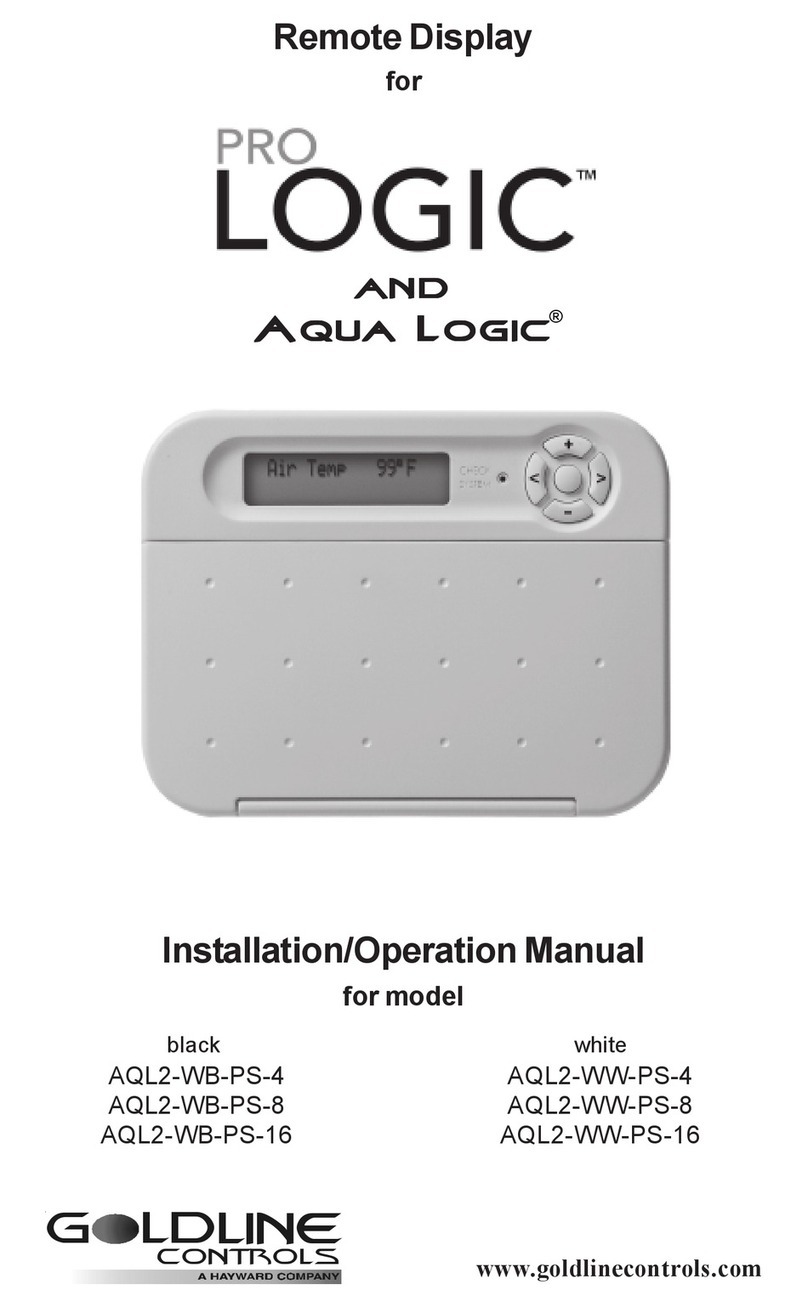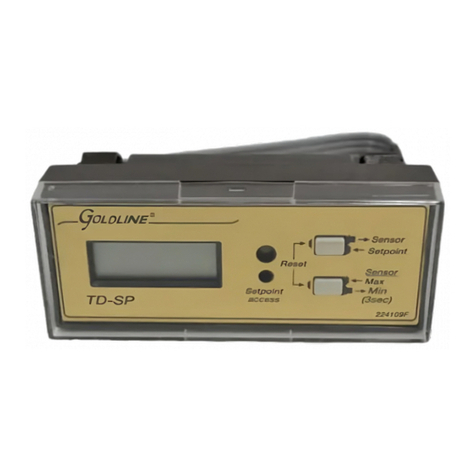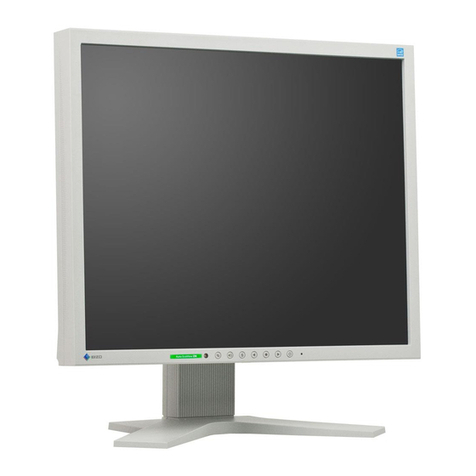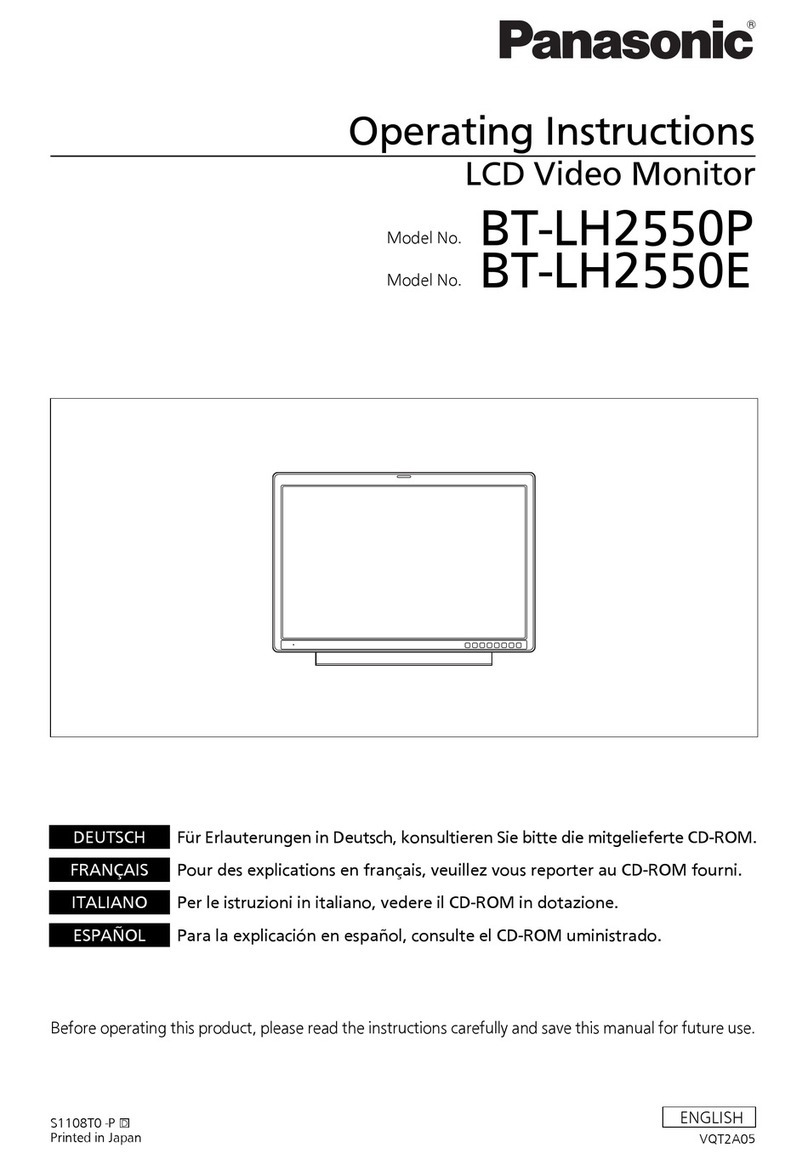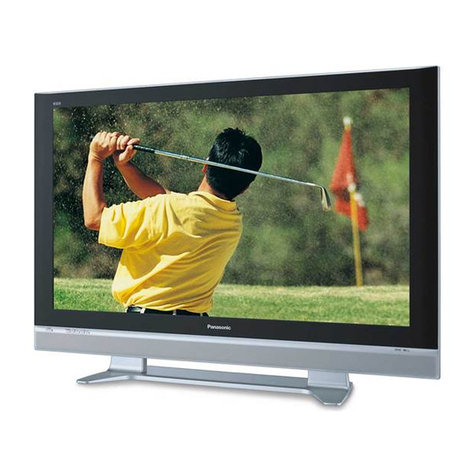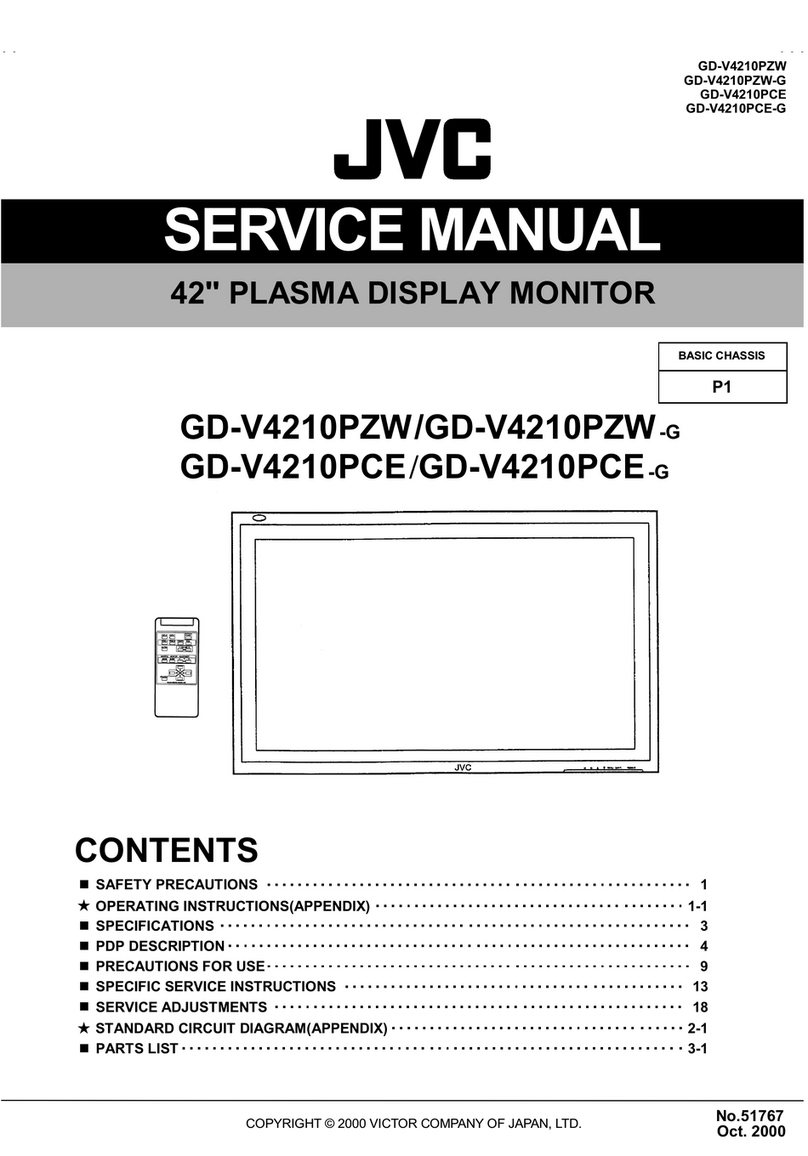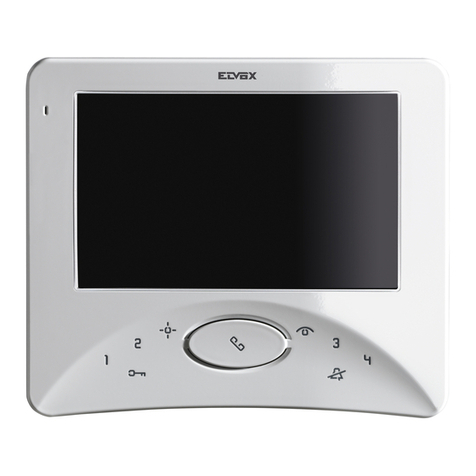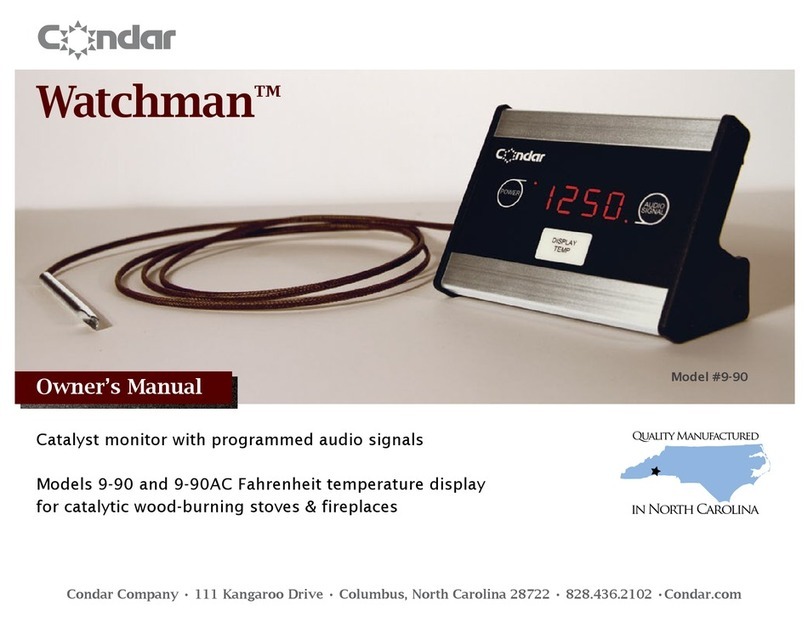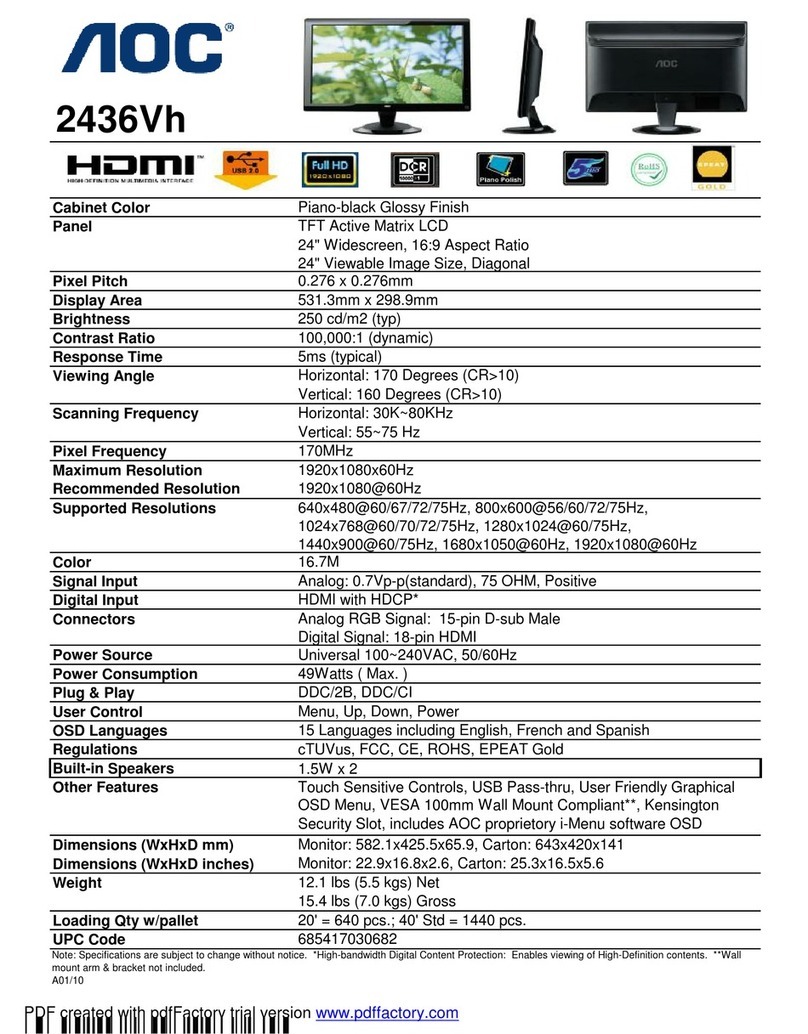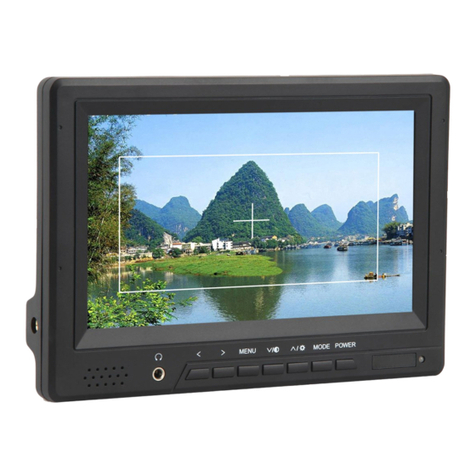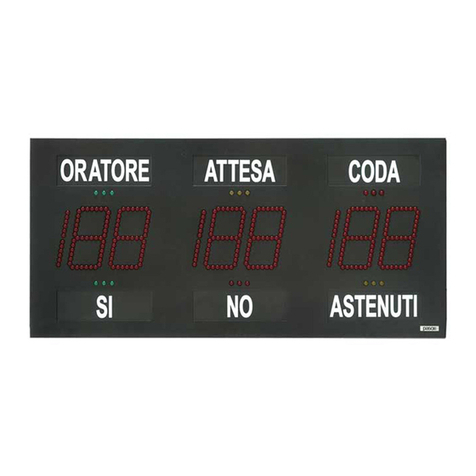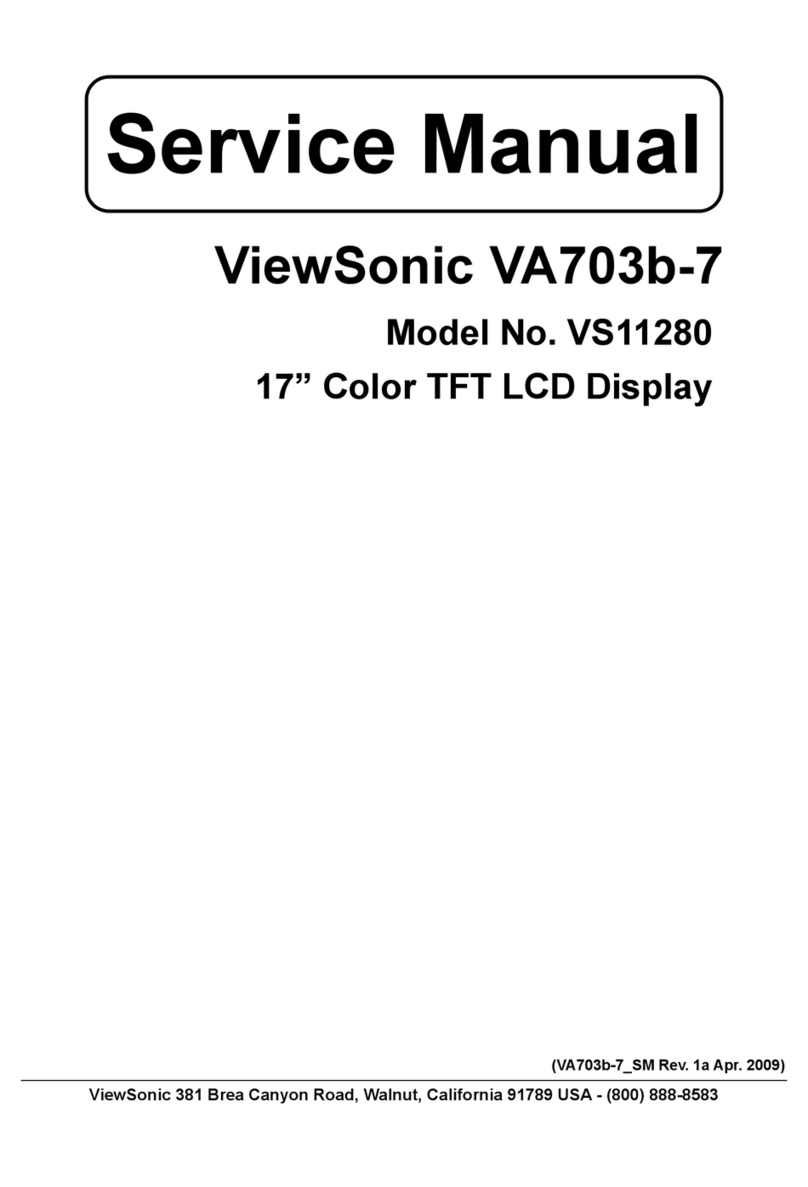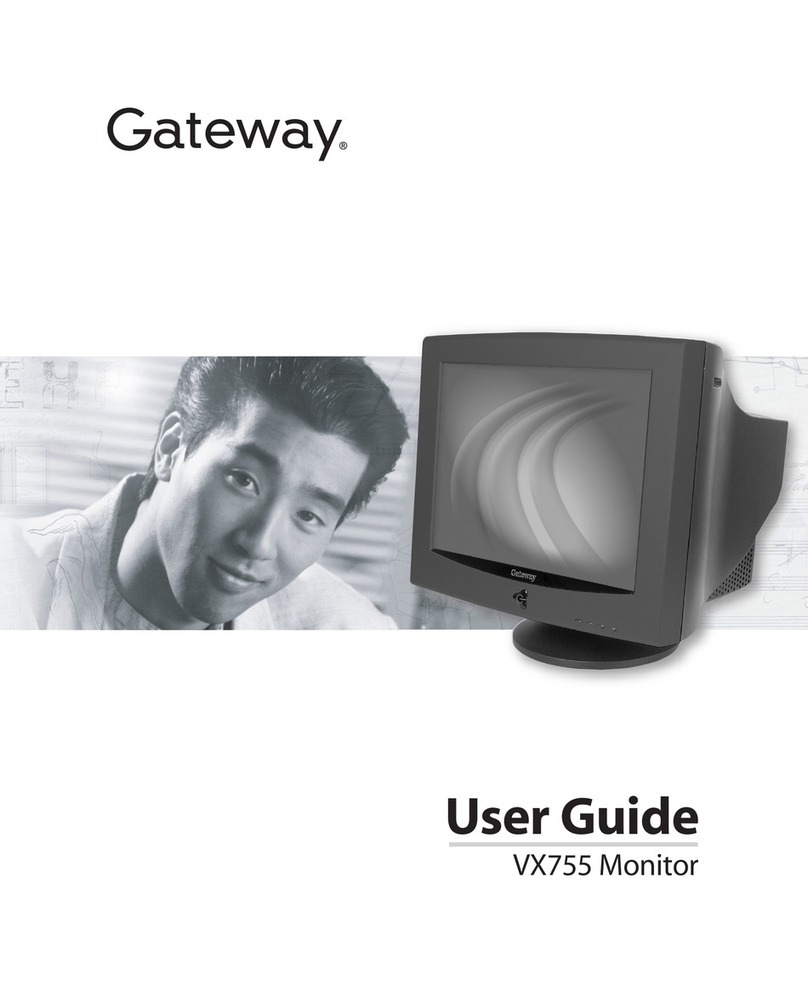Goldline TD-6 User manual

Temperature Monitor
TD-6
Description
The TD-6 is a 6 channel digital temperature
monitor which can display in Fahrenheit or Cel-
sius. LED indicators indicate which channel is
being displayed and the front panel pushbuttons
can be used to manually select the display chan-
nel or to cause the TD-6 to continuously “scroll”
(displaying each active channel sequentially).
The TD-6 also stores in memory the highest and
lowest readings for each temperature sensor.
First select the desired sensor channel, then dis-
play the highest temperature (max) by depress-
ing the lower pushbutton. The lowest tempera-
ture (min) will be displayed for 3 seconds imme-
diately after the lower pushbutton is released.
The max/min memory is “cleared” to the current
temperature by holding the lower pushbutton
and then momentarily pressing the upper
pushbutton. Note that the max\min tempera-
tures are retained in memory even if power is
removed from the TD-6.
The TD-6 can snap into a existing panel, flush
mounted on a 3 gang electrical box (use IE MK-MK-
MK-MK-
MK-
11
11
1mounting bracket) or surface mounted on a
wall (use IE MK-2 mounting bracket).
Specifications
Power:Power:
Power:Power:
Power:
Approximately .5 VA required
24VAC 50/60Hz
24VDC
Display Range:Display Range:
Display Range:Display Range:
Display Range:
-50°F to +250°F
-45°C to +121°C
Accuracy:Accuracy:
Accuracy:Accuracy:
Accuracy:
±1°F
Resolution:Resolution:
Resolution:Resolution:
Resolution:
1°F or 0.5°C
Out of Range:Out of Range:
Out of Range:Out of Range:
Out of Range:
Displays “HI” or “LO”
Operating Environment:Operating Environment:
Operating Environment:Operating Environment:
Operating Environment:
15°F to 130°F
0-95% rH
Dimensions:Dimensions:
Dimensions:Dimensions:
Dimensions:
4.25" x 1.75" x 1.62" overall
3.94" x 1.50" cutout for panel mounting

twisted pair wire is recommended, 18AWG
twisted pair wire for runs over 200'. If the wiring
runs close to other electrical equipment (motors,
high voltage wiring, compressors, etc.), shielded
wire should be used (Belden 8760 or 8428) is
recommended). The shield should be attached to
the "C"terminal ofthe TD-6only and nottoearth
ground.
3. Input Power3. Input Power
3. Input Power3. Input Power
3. Input Power
The TD-6 can be powered by either 24VAC or
24VDC. Connect the 24V source to the power
terminals labeled "R" and "C". If powering with
24VDC, the positive lead must attach to "R" and
negative lead to "C".
Operation
1.1.
1.1.
1. Power-Up and ResetPower-Up and Reset
Power-Up and ResetPower-Up and Reset
Power-Up and Reset
When the TD-6 is first powered up or reset,
it automatically determines which channels have
sensors attached and turns those channels on. If
it does not find a sensor attached it will skip that
particular channel and turn it off. The TD-6 goes
through this routine every time it is powered up
(powercut andthen reapplied)or reset(hold both
pushbuttons in for 3 seconds). Therefore, when
adding or removing sensors be sure to reset the
TD-6 so it can configure itself to the new format.
2.2.
2.2.
2. Display and ScrollingDisplay and Scrolling
Display and ScrollingDisplay and Scrolling
Display and Scrolling
Upon initial power-up, the TD-6 will con-
tinuously display the reading for the first active
channel (typically, this is channel 1 and the “1”
LED will be lit). Pressing the upper pushbutton
(“Sensor Index) will cause the display to se-
quence through all of the active channels. The
LEDs will indicate which channel is being dis-
played. If any channel is “off” (no sensor
connected or manually programmed off) it will
be skipped. Holding the “Sensor Index” button
down for 2 seconds will cause the TD-6 to begin
scrolling through all active channels. Tempo-
rarily pressing the “Sensor Index” button will
return the TD-6 to continuously display one
channel.
3.3.
3.3.
3. Display the max/min (highest/lowest)Display the max/min (highest/lowest)
Display the max/min (highest/lowest)Display the max/min (highest/lowest)
Display the max/min (highest/lowest)
readings on a channel:readings on a channel:
readings on a channel:readings on a channel:
readings on a channel:
Select the channel as described above and
hold the lower pushbutton. The highest tempera-
ture reached by the sensor since the last “clear”
Installation
1. Mounting1. Mounting
1. Mounting1. Mounting
1. Mounting
The TD-6 is designed to snap into a 3.94" x 1.50"
cutout. The optional MK-1 wallplate allows the
TD-6 to be flush mounted on a wall over a 3 gang
electrical box. Alternatively, the MK-2 bracket
allows the TD-6 to be mounted onto a wall
without penetrating the wall surface. Both the
MK-1 and MK-2 mounting plates must be or-
dered separately.
2. Sensor Wiring2. Sensor Wiring
2. Sensor Wiring2. Sensor Wiring
2. Sensor Wiring
Select the locations to be monitored and install
the appropriate sensors. These locations may be
up to 1000' away from the TD-6. Run wires from
thesensorstotheTD-6sensorterminals. 20AWG

(see 3.3.
3.3.
3. below) will be displayed. When the
buttonisreleased,thelowesttemperaturereached
by the sensor since the last “clear" will be dis-
played for 3 seconds.
4.4.
4.4.
4. Clear the max/min readings:Clear the max/min readings:
Clear the max/min readings:Clear the max/min readings:
Clear the max/min readings:
Select the desired channel. Hold the lower
pushbutton and momentarily press the upper
pushbutton. Both the maximum and minimum
readings for the selected channel are set to the
current reading. Repeat the process for each
channel you wish to clear.
5.5.
5.5.
5. Turn channels on/offTurn channels on/off
Turn channels on/offTurn channels on/off
Turn channels on/off
Channels can be manually turned on or off
using the recessed programming button in the
center of the TD-6. To turn channels on or off,
reset the TD-6 (hold both the upper and lower
pushbuttons in for 3 seconds). The display will
go blank for a moment, then the "-188.8" test
pattern will be displayed. While the "-188.8" is
displayed press the program button. "ch1" will
be displayed and the LED marked "1" will light
signifying that the TD-6 is ready to program
channel 1. Pressing the lower pushbutton will
display the current channel setting. If "Fd" is
displayed, the channel is on and ready to monitor
temperatures. If "oFF" is displayed, the channel
is turned off and will be skipped during monitor-
ing. To change either setting, press the program
button again. Pressing the upper or lower
pushbutton will toggle the setting back and forth
between "Fd" and "oFF". Select the desired
setting and press the program button one more
time. This locks in the new setting for channel 1.
This same procedure is used to program all
channels. Pushing the upper pushbutton will
advance the TD-6 through each of the channels.
To exit programming mode, hold the bottom
pushbutton in and momentarily press the upper
pushbutton.
6.6.
6.6.
6. Fº/Cº SelectionFº/Cº Selection
Fº/Cº SelectionFº/Cº Selection
Fº/Cº Selection
The TD-6 can be programmed to monitor
temperatures in Fahrenheit or Celsius. The pro-
gramming procedure is similar to turning chan-
nelson andoff (5.5.
5.5.
5.). To change the current setting
reset the TD-6. While the test pattern is dis-
played, push the program button. "ch1" will be
displayed. Pushing the upper pushbutton will
advance the TD-6 to the next channel. Keep
pushing the upper pushbutton until "FC" is dis-
played (after "ch6"). Pressing the lower
pushbutton will show the current setting. "F"
indicates Fahrenheit and "C" indicates Celsius.
Push the program button again to change the
setting. Pressing the upper or lower pushbutton
will toggle the setting back and forth between
"F" and "C". Select the desired setting and press
theprogram button one more time. This will lock
in the new setting. To exit programming mode,
hold the bottom pushbutton in and momentarily
press the upper pushbutton.
Troubleshooting
There are no setup parameters to set or other
adjustments required for the TD-6 to operate
properly. If you have a problem:
1. For“nodisplaynodisplay
nodisplaynodisplay
nodisplay”conditioncheckthatpower
is connected properly. Turn power off, wait 1
minute and then reapply power. If there still is a
problem the TD-6 will have to be returned for
repair.
2. For temperature displays that “bouncebounce
bouncebounce
bounce” be-
tween several different values: Check that the
sensor lines are not near other electrical cabling,
use shielded sensor wire if required. If shielded
wire is used, make sure the shield is attached to
the "C" terminal of the TD-6 only.
3. For “erroneous” readings check that the
sensor is making good thermal contact with
whatever is being measured and that the sensor is
insulated from ambient temperatures. If the
sensor is in a wet environment (constantly con-
densing humidity), moisture may, over time,
enter the sensor body and result in errors. If this
is the case, replace the sensor.
4. If "HI" or "LO" is displayed, there may be a
problem with the sensor or sensor wiring. To
determine if this is the problem, disconnect the
sensor wiring from the TD-6. Measure the resis-
tance across the sensor wiring with an ohmmeter
if a short or open condition exists, determine
whether the sensor or the wiring is the cause by
measuring resistance directly at the sensor. If the
results are the same, the problem is in the sensor.
If not, the wiring is the cause.
Operation (continued)

INDEPENDENT ENERGY INC.
P.O. Box 1305, 42 Ladd Street, East Greenwich, RI 02818
(401) 884-6990 (800) 343-0826 (401) 885-1500 fax
Technical Assistance
For help in installing, operating, or troubleshoot-
ing this control you may call for technical assis-
tance at 800-343-0826800-343-0826
800-343-0826800-343-0826
800-343-0826. Independent Energy’s
Temperature vs. Resistance
technicians are available from 8:00AM —
5:00PM Eastern Time, Monday through Friday.
You may call at other times and leave a message,
they will return the call as soon as possible.
All Goldline controls use 10K thermistor sen-
sors. When disconnected from the control the
sensor will read 10 K ohms at 25°C/77°F. Refer
to the chart below for the resistance at other
temperatures. For a given temperature, the resis-
tance reading should be accurate to +/- 1%. For
a given resistance reading, the temperature read-
ing should be accurate to +/- 0.5°F.
°F OHM °F OHM °F OHM °F OHM °F OHM °F OHM °F OHM
-50 491,142 0 85,387 50 19,900 100 5,827 150 2,044 200 829 250 378
-49 472,642 1 82,719 51 19,377 101 5,697 151 2,005 201 815 251 373
-48 454,909 2 80,142 52 18,870 102 5,570 152 1,966 202 802 252 367
-47 437,907 3 77,656 53 18,377 103 5,446 153 1,929 203 788 253 362
-46 421,602 4 75,255 54 17,899 104 5,326 154 1,892 204 775 254 357
-45 405,965 5 72,937 55 17,435 105 5,208 155 1,856 205 763 255 352
-44 390,966 6 70,698 56 16,985 106 5,094 156 1,821 206 750 256 347
-43 376,577 7 68,535 57 16,548 107 4,982 157 1,787 207 738 257 342
-42 362,770 8 66,447 58 16,123 108 4,873 158 1,753 208 726 258 337
-41 349,522 9 64,428 59 15,711 109 4,767 159 1,720 209 714 259 332
-40 336,804 10 62,479 60 15,310 110 4,664 160 1,688 210 702 260 327
-39 324,597 11 60,595 61 14,921 111 4,563 161 1,657 211 691 261 323
-38 312,876 12 58,774 62 14,543 112 4,464 162 1,626 212 680 262 318
-37 301,622 13 57,014 63 14,176 113 4,368 163 1,596 213 669 263 314
-36 290,813 14 55,313 64 13,820 114 4,274 164 1,567 214 658 264 309
-35 280,433 15 53,669 65 13,473 115 4,183 165 1,538 215 648 265 305
-34 270,460 16 52,078 66 13,136 116 4,094 166 1509 216 637 266 301
-33 260,878 17 50,541 67 12,809 117 4,007 167 1,482 217 627 267 296
-32 251,670 18 49,054 68 12,491 118 3,922 168 1,455 218 617 268 292
-31 242,821 19 47,616 69 12,182 119 3,839 169 1,428 219 607 269 288
-30 234,316 20 46,225 70 11,882 120 3,758 170 1,402 220 598 270 284
-29 226,138 21 44,879 71 11,589 121 3,679 171 1,377 221 588 271 280
-28 218,276 22 43,577 72 11,305 122 3,602 172 1,352 222 579 272 276
-27 210,716 23 42,318 73 11,029 123 3,527 173 1,328 223 570 273 273
-26 203,445 24 41,099 74 10,761 124 3,454 174 1,304 224 561 274 269
-25 196,451 25 39,919 75 10,500 125 3,382 175 1,281 225 553 275 265
-24 189,722 26 38,777 76 10,246 126 3,312 176 1,258 226 544 276 262
-23 183,248 27 37,671 77 9,999 127 3,244 177 1,235 227 536 277 258
-22 177,019 28 36,601 78 9,758 128 3,177 178 1,213 228 527 278 255
-21 171,023 29 35,565 79 9,525 129 3,112 179 1,192 229 519 279 251
-20 165,251 30 34,561 80 9,297 130 3,049 180 1,171 230 511 280 248
-19 159,696 31 33,590 81 9,076 131 2,987 181 1,150 231 503 281 244
-18 154,347 32 32,648 82 8,861 132 2,926 182 1,130 232 496 282 241
-17 149,197 33 31,737 83 8,651 133 2,867 183 1,110 233 488 283 238
-16 144,236 34 30,853 84 8,447 134 2,809 184 1,091 234 481 284 235
-15 139,458 35 29,998 85 8,249 135 2,752 185 1,072 235 473 285 232
-14 134,855 36 29,169 86 8,056 136 2,697 186 1,054 236 466 286 229
-13 130,420 37 28,365 87 7,867 137 2,643 187 1,035 237 459 287 225
-12 126,147 38 27,587 88 7,684 138 2,591 188 1,017 238 452 288 223
-11 122,030 39 26,832 89 7,506 139 2,539 189 1,000 239 445 289 220
-10 118,061 40 26,100 90 7,333 140 2,489 190 983 240 439 290 217
-9 114,235 41 25,391 91 7,164 141 2,440 191 966 241 432 291 214
-8 110,547 42 24,704 92 6,999 142 2,392 192 950 242 426 292 211
-7 106,991 43 24,037 93 6,839 143 2,345 193 933 243 420 293 208
-6 103,561 44 23,391 94 6,683 144 2,299 194 918 244 413 294 206
-5 100,254 45 22,764 95 6,530 145 2,254 195 902 245 407 295 203
-4 97,063 46 22,156 96 6,382 146 2,210 196 887 246 401 296 200
-3 93,986 47 21,566 97 6,238 147 2,167 197 872 247 395 297 198
-2 91,017 48 20,993 98 6,097 148 2,125 198 857 248 390 298 195
-1 88,152 49 20,438 99 5,960 149 2,084 199 843 249 384 299 193
300 190
P/N 224308(D)
Other Goldline Monitor manuals
